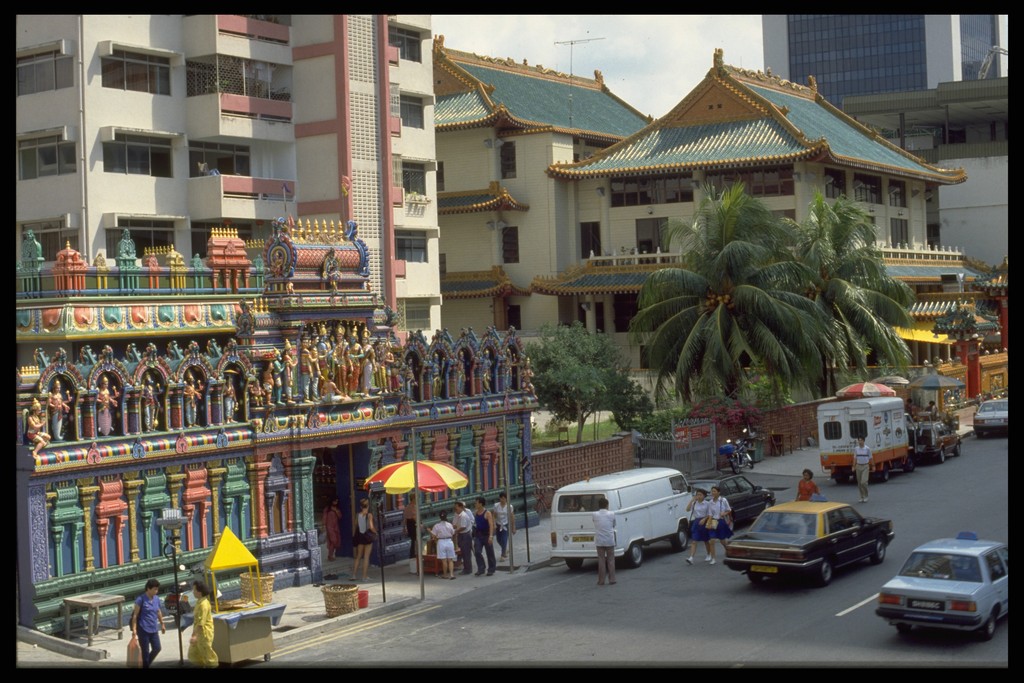新加坡佛教总会
新加坡佛教总会(简称佛总)成立于1949年,成立之目的是为了创立一个代表本地佛教社群的联合机构,并扮演英国殖民当局和各佛教机构之间沟通的桥梁。11949年7月31日,身为佛教徒的华社领袖李俊承(1888-1966)广邀新加坡各佛寺领袖,商讨成立一个团结佛教社群的联合会之事。几个月后的10月30日,佛总正式注册,宣布创立。成立之初,佛总的管理委员会由五位僧侣和五位居士担任,李俊承任会长,光明山普觉禅寺住持宏船法师(1907-1990)为副会长。21950年2月12日,佛总于新加坡佛教居士林举行成立典礼,李俊承在会上提出了佛总的五大方针,即促进世界和平、弘扬佛法、推广佛教教育、提倡慈善活动,以及协助提升僧伽素质。3

佛教行动主义
在1950年至1964年李俊承担任会长期间,佛总积极与英国殖民当局合作,为华社佛教群体谋求福利,其中包括成功争取将卫塞节列为新加坡的公共假日。经过佛总多次努力,大卫·马绍尔(1908-1995)领导的劳工阵线政府方于1955年6月15日宣布以卫塞节取代圣灵降临节成为新加坡法定假日。4
除此之外,佛总也分别于1955年9月和1959年2月,两次发起请愿,最终成功游说殖民地政府批准华族佛教社群设立坟山。除了在蔡厝港16英里建起占地110英亩的佛教坟场,佛总也在墓地周围修建桥梁、排水沟、道路、佛寺和食堂。5
新加坡独立后(1965年至今),佛总的方针及方向也有所改变。这种改变可归于两点。首先是领导层的变化。李俊承是佛总第一位,也是最后一位以居士身份任职的会长。在李俊承完成八个任期并于1964年退休后,接任的会长皆为出家僧侣:宏船法师(1964-1986年任职)、广洽法师(1986-1988年)、常凯法师(1988-1990年)、优昙法师(1990-1992年)、妙灯法师(1992-1994年)、隆根法师(1994-2004年)、惟俨法师(2004-2006年)、广声法师(2006-2014年)和广品法师(2014年至今)。6
“革新佛教”(Reformist Buddhism)的出现,则是促使佛总改变的第二个因素。自1970年代以来,随着社会政治和经济环境不断改变,佛教组织也必须在新时代中回应新的社会需求。7新兴的革新佛教强调推广佛经知识、鼓励大众参与认识佛法的活动,并更广泛地宣传佛教信仰。因此,佛总成员在新加坡独立后,更加积极地弘扬佛法和推广教育。
设立学校
佛总向来重视教育,1949年成立后便创办了新加坡第一所佛教小学——菩提学校。菩提学校于1990年获选为教育部特选小学。1982年,佛总又创办了文殊中学,这是新加坡第一所,也是唯一一所佛教中学。菩提学校和文殊中学目前都是政府辅助学校,办校经费主要由政府提供,佛总则负责筹集课外活动和校园设施所需的额外资金。

新中交流
在1990年新中两国正式建交之前,佛总已在促进两国佛教交流方面扮演了重要角色。1982年至1990年间,佛总的第二任会长宏船法师曾八次访华,会见中国国家副主席乌兰夫(1906-1988)等国家领导人,以及中国佛教协会的佛教领袖。访华期间,宏船法师也前往佛教圣地朝圣,协助修复与其师父会泉法师(1874-1942)有关联的寺院,并在多家寺院主持法会仪式。8宏船法师圆寂后,新中两国之间的佛教联系依然持续直到今天。
今时今日的佛总,仍然是代表着新加坡佛教社群的重要机构,不只推动教育和国际间的宗教活动交流,更促进了新加坡佛教徒与其他信仰组织之间的对话。
本文原文为 Singapore Buddhist Federation,此为编辑和翻译后的版本。点击此处查看原文。
| 1 | Jack Meng-Tat Chia, “Defending the Dharma: Buddhist Activism in a Global City-State”. |
| 2 | 释能度等编,《新加坡汉传佛教发展概述》,页60。 |
| 3 | Ong Y. D., Buddhism in Singapore: A Short Narrative History (Singapore: Skylark Publications, 2005), 87. |
| 4 | 同上,页92。 |
| 5 | 释能度等编,《新加坡汉传佛教发展概述》,页61。 |
| 6 | 释能度等编,《新加坡汉传佛教发展概述》,页63。 |
| 7 | Khun Eng, Kuah-Pearce, State, Society and Religious Engineering: Towards a Reformist Buddhism in Singapore, 1, 233. |
| 8 | Jack Meng-Tat Chia, “Buddhism in Singapore-China Relations: Venerable Hong Choon and his Visits, 1982–1990”. |
Chia, Jack Meng-Tat. “Buddhism in Singapore-China Relations: Venerable Hong Choon and his Visits, 1982–1990”. The China Quarterly 196 (December 2008): 864–883. [中译版:谢明达,〈新中关系中的佛教——宏船法师及其访华,1982-1990〉。《东南亚研究》第4期,2013年,页78-85] | |
Chia, Jack Meng-Tat. “Defending the Dharma: Buddhist Activism in a Global City-State”. In Singapore: Negotiating State and Society, 1965–2015, edited by Jason Lim and Terence Lee, 143–158. New York: Routledge, 2016. | |
Kuah-Pearce, Khun Eng. State, Society and Religious Engineering: Towards a Reformist Buddhism in Singapore. Singapore: Eastern Universities Press, 2003. | |
许源泰,《狮城佛光:新加坡佛教发展百年史》。香港:香港中文大学人间佛教研究中心,2020。 | |
释能度等编,《新加坡汉传佛教发展概述》。新加坡:药师行愿会,2010。 |










